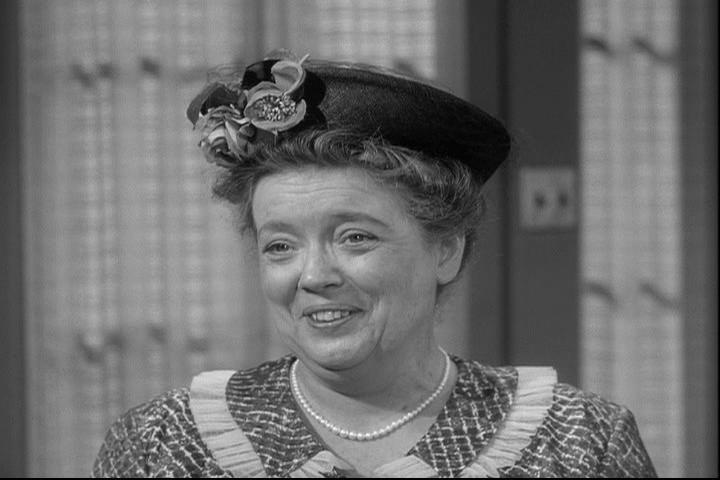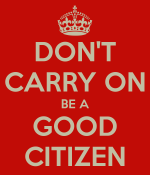By Suzanne Sparrow Watson
 I was watching television the other day and up popped an advertisement for a DVD collection of the old “Andy Griffith Show“. And, yes, you would be correct in assuming that I was not watching MTV. Clearly the distributors are trying to tap into the sentiment some of us Baby Boomers hold for a show that reflects a much more innocent time and place. But it was not the bucolic setting or regional twang that made me sit up and take notice. It was the picture of Frances Bavier, who played the wonderful character of “Aunt Bee”. She always seemed so comforting and endearing. She was the “go to” person for problem solving and home-baked apple pie. I wanted to know a little more about her; more specifically, I was curious as to how old she was when she played that part. The wonderful thing about both Google and an iPad is that all those questions we used to ask ourselves somewhat rhetorically can now be answered immediately. So I looked up Ms. Bavier on Wikipedia and was shocked to learn that she was only 58 when she started on the show. Jeez – I thought she was about 100.
I was watching television the other day and up popped an advertisement for a DVD collection of the old “Andy Griffith Show“. And, yes, you would be correct in assuming that I was not watching MTV. Clearly the distributors are trying to tap into the sentiment some of us Baby Boomers hold for a show that reflects a much more innocent time and place. But it was not the bucolic setting or regional twang that made me sit up and take notice. It was the picture of Frances Bavier, who played the wonderful character of “Aunt Bee”. She always seemed so comforting and endearing. She was the “go to” person for problem solving and home-baked apple pie. I wanted to know a little more about her; more specifically, I was curious as to how old she was when she played that part. The wonderful thing about both Google and an iPad is that all those questions we used to ask ourselves somewhat rhetorically can now be answered immediately. So I looked up Ms. Bavier on Wikipedia and was shocked to learn that she was only 58 when she started on the show. Jeez – I thought she was about 100.
I shouldn’t have been surprised. It seems that whenever I’m watching a classic movie or TV show I think about how much older people used to look. It happens with  both sexes but is perhaps more prominent with women. Actresses that played middle-aged moms looked plump and matronly. They wore housedresses, sensible shoes and hats. They ate saturated fats, tons of sugar and drank bourbon. And in real life they were only 50 years old. Gloria Swanson, for example, was 50 when she played the washed up movie star Norma Desmond in “Sunset Boulevard”. Contrast that with today’smovie icons. Kim Cattrall, pictured right, was 58 when this photo was taken. A far cry from Aunt Bee at the same age. Of course, today’s stars have the benefit of hair color, skilled plastic surgeons and fitness trainers. They wear designer clothes and shoes that could double as railroad spikes. Instead of girdles they have whole-body Spanx. This trend toward looking younger has spawned the phrase “60 is the new 40”. I’m actually beginning to hear that “70 is the new 50”, which I think is a direct reflection of our refusal to grow old. I’m sure by next year 80 will be the new 60.
both sexes but is perhaps more prominent with women. Actresses that played middle-aged moms looked plump and matronly. They wore housedresses, sensible shoes and hats. They ate saturated fats, tons of sugar and drank bourbon. And in real life they were only 50 years old. Gloria Swanson, for example, was 50 when she played the washed up movie star Norma Desmond in “Sunset Boulevard”. Contrast that with today’smovie icons. Kim Cattrall, pictured right, was 58 when this photo was taken. A far cry from Aunt Bee at the same age. Of course, today’s stars have the benefit of hair color, skilled plastic surgeons and fitness trainers. They wear designer clothes and shoes that could double as railroad spikes. Instead of girdles they have whole-body Spanx. This trend toward looking younger has spawned the phrase “60 is the new 40”. I’m actually beginning to hear that “70 is the new 50”, which I think is a direct reflection of our refusal to grow old. I’m sure by next year 80 will be the new 60.
 But despite our outward appearances for the better, there are some things that can’t be buffed or blown or suctioned away as we age. Teeth, for one thing. I don’t know anyone over 60 who hasn’t had crowns, bridges, implants or root canals. Oh sure, their teeth have been “brightened” by the latest technology but just like horses, teeth always give our age away. Another seemingly inescapable fact of aging is bad backs. Despite hours of sit-ups and “focusing on our core”, the back just eventually wears out. We spent an hour at a cocktail party the other night listening to everyone’s tales about lower back pain and how it has ruined – RUINED! – their golf game. As if they were par shooters to begin with. Finally, the aging factor that starts more arguments than any other: hearing loss. The most frequently uttered sentence in our house is: “What? I can’t hear you!” That is only rivaled by “Could you please turn that TV down/up!” (depending on who is speaking). Sure, they make rather small and unobtrusive hearing aids these days but, like alcoholics, the first step is the hardest – admitting that you have a problem. Which explains why so many of our friends are now watching TV in separate rooms. It’s easier than arguing about volume and having to face the fact that we are turning into our grandparents.
But despite our outward appearances for the better, there are some things that can’t be buffed or blown or suctioned away as we age. Teeth, for one thing. I don’t know anyone over 60 who hasn’t had crowns, bridges, implants or root canals. Oh sure, their teeth have been “brightened” by the latest technology but just like horses, teeth always give our age away. Another seemingly inescapable fact of aging is bad backs. Despite hours of sit-ups and “focusing on our core”, the back just eventually wears out. We spent an hour at a cocktail party the other night listening to everyone’s tales about lower back pain and how it has ruined – RUINED! – their golf game. As if they were par shooters to begin with. Finally, the aging factor that starts more arguments than any other: hearing loss. The most frequently uttered sentence in our house is: “What? I can’t hear you!” That is only rivaled by “Could you please turn that TV down/up!” (depending on who is speaking). Sure, they make rather small and unobtrusive hearing aids these days but, like alcoholics, the first step is the hardest – admitting that you have a problem. Which explains why so many of our friends are now watching TV in separate rooms. It’s easier than arguing about volume and having to face the fact that we are turning into our grandparents.
But no matter how much we’re decaying on the inside, it’s good to know that if we so choose, we women can sustain a more youthful outward appearance with a little effort and a lot of money. Or we can put on a jaunty little flowered hat and try to exude the same kindly, well-worn and lovable countenance as Aunt Bee. The point is – we have options. Welcome to the new middle ages.








